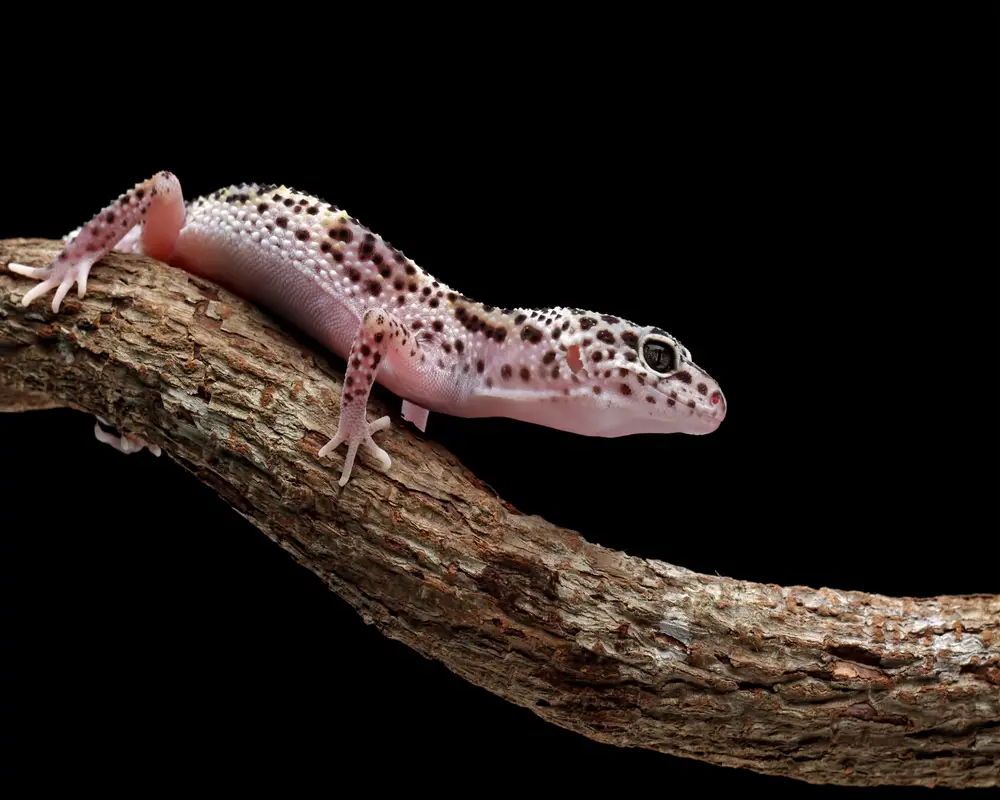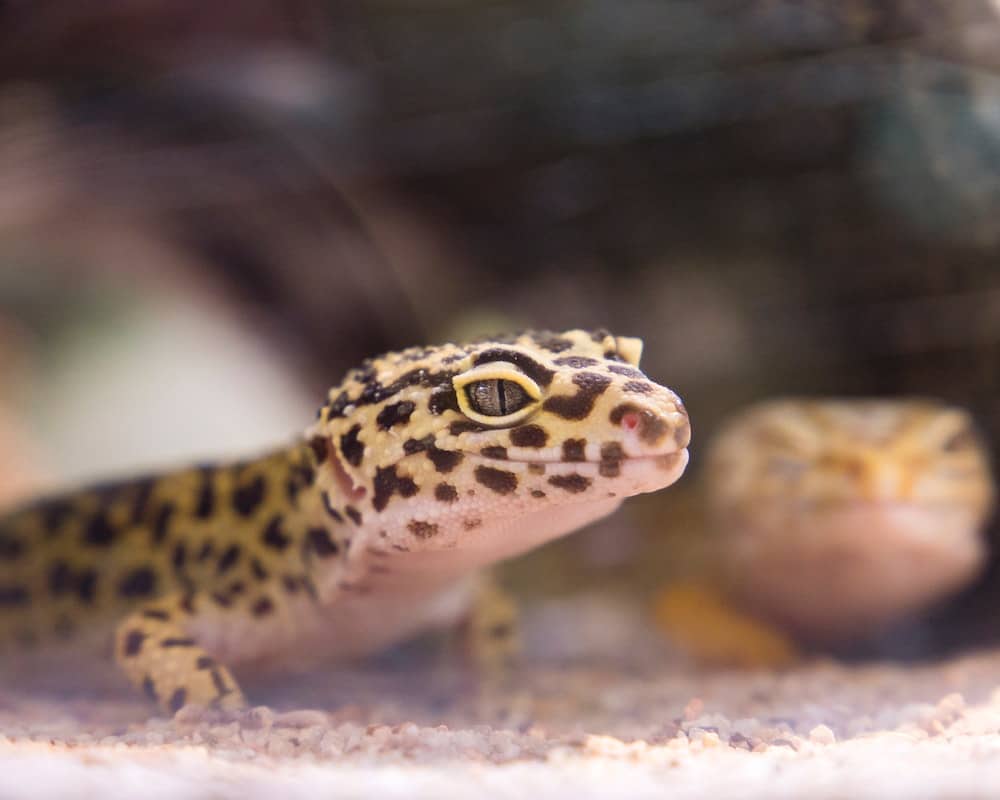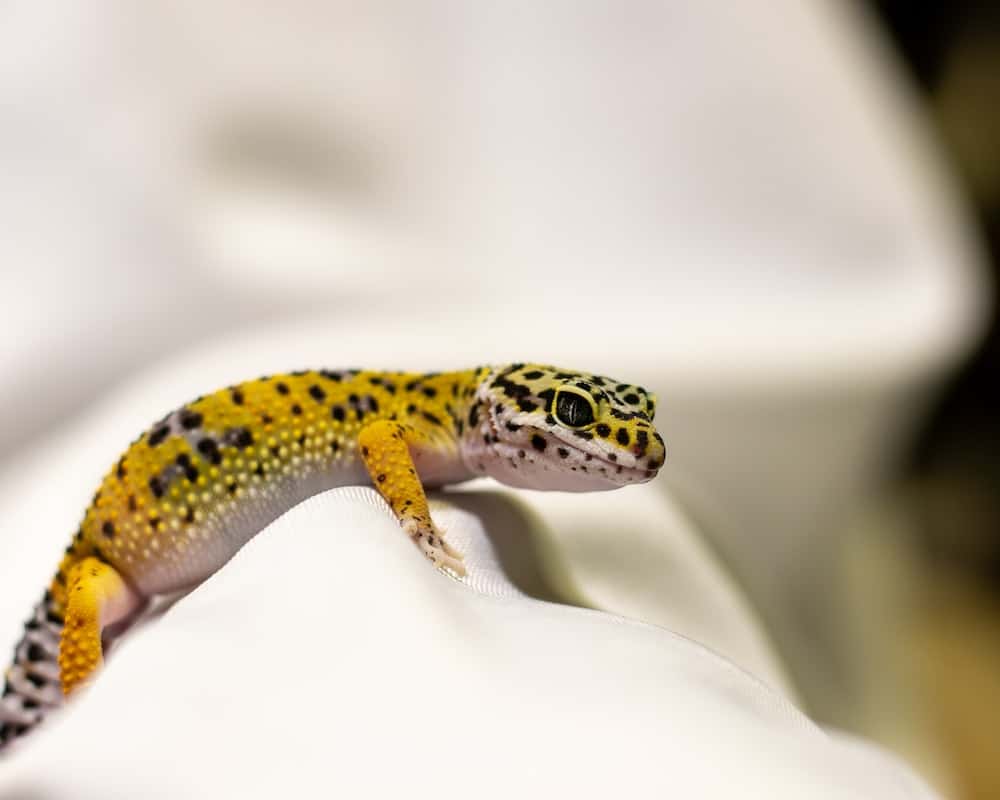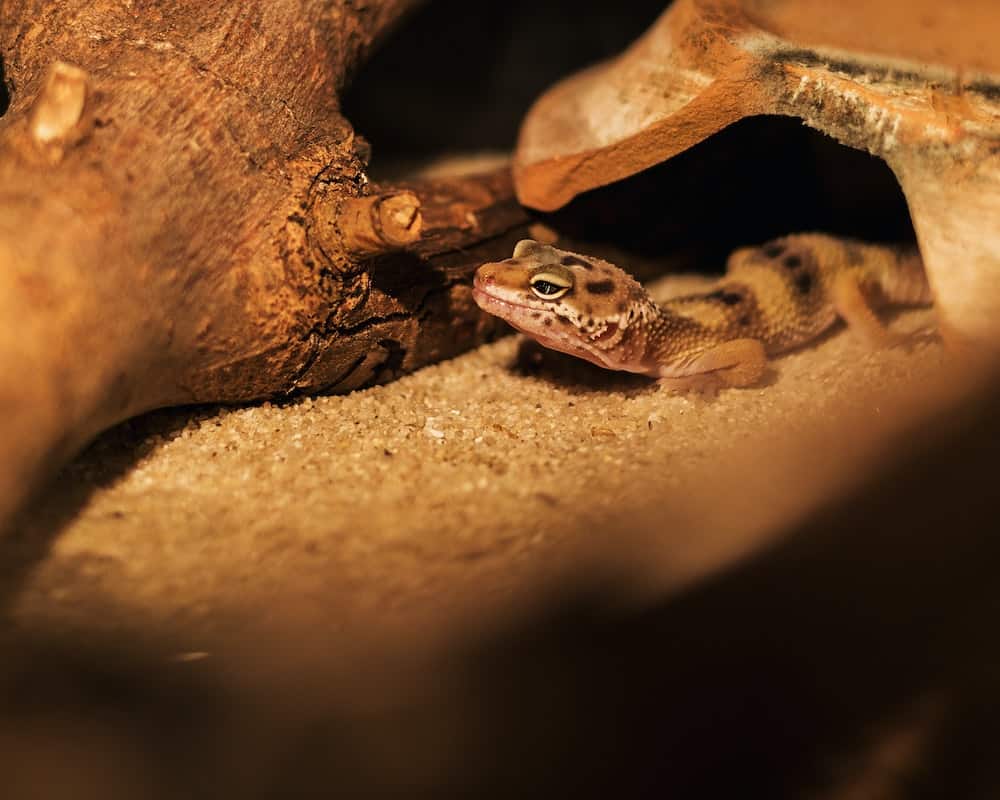Are you curious about the unique vision of a leopard gecko and wondering whether your pet can see in the dark? How does night vision help them? How much can they really see?
Can Leopard Geckos See In The Dark?
The fun fact is that these reptiles have excellent night vision and can distinguish between different objects at nightime. They are very active at the time of sunrise and sunset when the light is minimal. This helps them be aware of their surroundings and escape any lurking predators.
How Clearly Can They See?
The good news is that these reptiles have relatively good eyesight, especially since they need it to hunt and detect motions in their surrounding. While their clarity may not be at par with that of humans, it is still well-suited for their hunting behavior and motion detection.
In terms of clarity, your pet likely has a sharp vision for objects that are in their surrounding vicinity. However, objects that are placed relatively far away may not have the same visual acuity.
It is also useful to note that they are mainly dependent on their vibration detection and sense of smell to locate prey.
They are known to feed on insects and are known to be crepuscular by nature, which implies that they are most active for hunting and catching prey at the time of dusk and at the time of dawn. Hence, their vision is suited to hunting during these hours with ease.
Leopard geckos are known for staring for various reasons like environmental awareness, hunting behavior, territorial behavior, thermoregulation, and curiosity.
Do They Have A Good Vision For NightTime?
These reptiles are known to be active at times when there is little too low illumination of light. They like the quiet and stillness of the dark hours and are known to revolve their hunting times at this hour. Their eyesight is made to be sensitive to light.
They have bulged eyes that slightly pop out to cover a larger field of area. This helps them detect motion or the slightest movement even from their periphery vision in the darkness. It is the sensitivity of their retinas that allows for this night vision to work so efficiently for them.
While these animals have excellent vision at nighttime, it is important to remember that it is required for a reliant dull light such as moonlight or starlight or its equivalent to be able to see in the dark.
In a time of complete darkness, it is difficult for them to make out shapes and objects like humans.
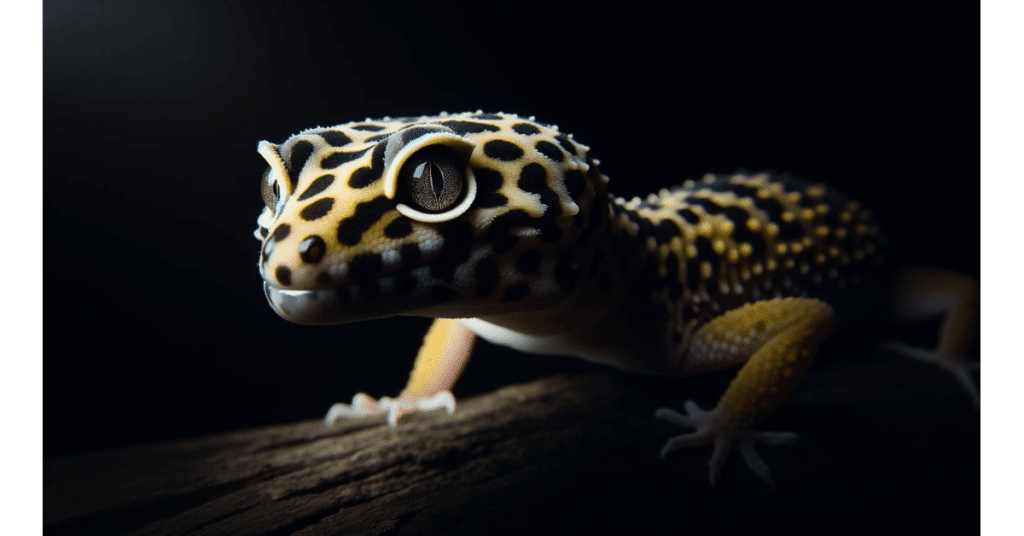
How Can They See at Night?
Now that we are certain that these animals have great night vision, let us understand how exactly this happens.
These reptiles possess a feature that is unique to them and is called the tapetum lucidum. This is a reflective layer that is present behind the retina that is present in their eyes. This structure acts like a mirror and reflects the light back. This enhanced development of their eyes helps them see even in dim light environments. Take a look at this detailed explanatory video to understand how this works.
Additionally, they are known to have a high concentration of rod cells in the retina of their eyes. These rod cells are photoreceptor cells that are created to be sensitive to lesser light conditions and play a huge role in night vision.
You will notice that almost all nocturnal animals in the wild exhibit this feature that allows them to see clearly even when there is no light in the surrounding environment.
What Do These Reptiles Notice and See In The Dark?
Since they have excellent vision even in the dark, they are perceptive to many movements and can detect motion with their eyesight.
Here is a list of things that these reptiles notice and can see in low-light conditions:
Movement
These reptiles have sensitive eyes, as we discussed before. It is due to their high concentration of rod cells and later behind their retina. This enables them to detect even the slightest movements in dark and low-light conditions.
This helps them detect their prey and hunt insects with ease. It is also useful to escape from potential predators at night. It’s important to look out for eye infection symptoms, as eye infections are common among these animals.
Silhouettes
Another thing Leopard geckos can see in the dark is that they can quickly recognize the silhouettes of objects and other species in dark or low-light conditions.
It is easy for them to make out whether an object or other organism is large or small by noticing their silhouette. They can distinguish between different shapes and sizes, which is useful in identifying potential threats or prey.
Light And Shadow
While these reptiles are active at night and early hours of the day, they can easily perceive variations in light and shadow. They may not see the colors or the exact shades of objects, but they can easily notice light variations and shadows.
This allows them to detect changes in their surroundings and identify potential hiding spots or objects.
Reflections
As mentioned earlier, leopard geckos have a specialized layer at the back of their retina in the eyes called tapetum lucidum. With the help of this layer, their night vision improves tenfold. Some even say that it is almost 350 times better!
This layer helps reflect the incoming light, which maximizes the use of available dim light and hence enhances the ability to see even at night.
Can They See Colors In The Darkness?
These reptiles have photoreceptors like us that consist of cones and rods in the retina. Rods help in night vision, and cones help in seeing colors. When it comes to these reptiles, they have a large number of rods that enable them to see in the dark.
However, there was not much indication of the presence of an equal number of cones.
However, there is a twist. Although these animals have a large number of rods present in their retina, these rods themselves have in-built cone qualities in them. This feature helps them tremendously. Having these qualities in their retina enables them to see slight colors even in the dark.
Although this ability is diminished, it is still possible for them to see these slight colors. However, in very low light, just like humans and many animals, it is not possible for them to properly distinguish between different colors in darkness.
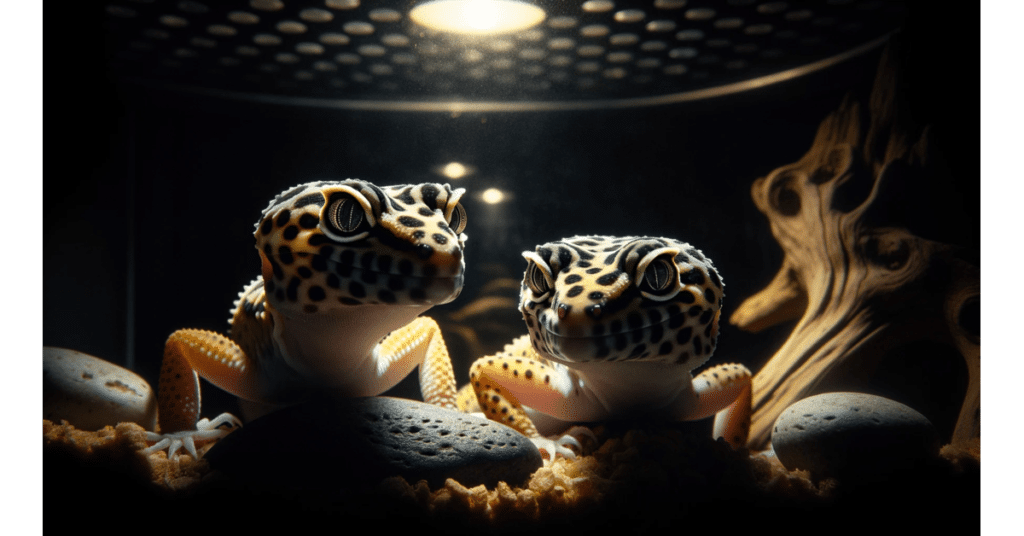
Why Do They Require The Ability To See In The Night?
They possess the ability to see in the dark mainly because they are accustomed to performing many of their activities at night and are categorized as nocturnal or crepuscular animals. This means they are most active during the night or during the late hours of dawn and dusk.
Their visual adaptations for low-light conditions help them stay active and be able to survive even at night time or at dark hours.
Here are a few reasons why leopard geckos require the ability to see in the dark:
Hunting
Leopard geckos mainly eat insects and are hence classified as insectivores. They obtain their food by relying on hunting their food. Many of their prey species, such as crickets and other small insects, are also most active during the night or at dark hours. Leopard geckos enjoy eating wax worms but it’s advised not to feed them daily as the at content is high.
By being able to see in the dark, leopard geckos can effectively detect, track, and capture their prey.
Safety
In their natural habitat, leopard geckos encounter various predators, including larger reptiles and birds of prey. The possibility of having night vision or enhanced eyesight during dark hours can be extremely helpful in escaping from their prey.
Being able to see in low-light conditions allows them to detect potential threats take action and escape as quickly as possible to avoid predation. They can even make screaming noises, there are various reasons for this which include facing threats or danger and feeling stressed.
Navigation
They need to move around their environment, find suitable hiding spots, and navigate obstacles, even in the dark, especially in the dark.
Their ability to see in low-light conditions helps them explore their environment, identify safe hiding places, and move efficiently for better food, escape, or navigation.
Reproduction And Social Interaction
They mate during their active hours, often in the late evenings or at night. The ability to see in the dark aids them in locating potential mates, recognizing signals or displays from other geckos, and engaging in social interactions.
These small signs and queues from potential mates can be important to detect in the dark.
Conclusion
While these animals have considerably good vision in the daytime, they have a sharper and more specialized ability that helps them see better at night.
They have features that help them determine various shapes and objects, even at nightime. It is useful at the time of hunting for prey or escaping from potential threats or predators. This is an important ability as they are land animals that need to rely on their vision to survive.

